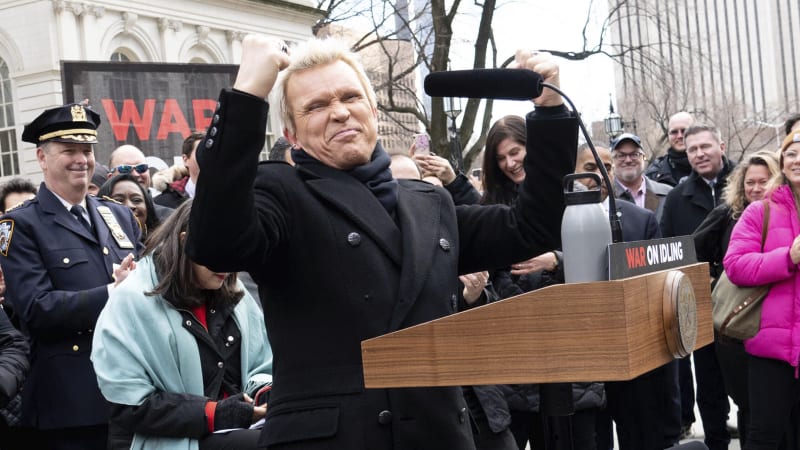OFF THE TOP
You might have heard: With its merger approved, the new Gannett readies the cost-cutting knife (Nieman Lab)
But did you know: On a rough day for American newspapers, investors aren’t buying Gannett’s story and Tribune’s not done chopping (Nieman Lab)
Gannett, now America’s largest newspaper chain by far, announced in its quarterly earnings report on Thursday that revenues are down about 10% and print advertising is down 18% from a year ago. In the earnings call, CEO Mike Reed was challenged by an investor who was skeptical that Gannett can turn itself around. “I just don’t believe where the stock is trading,” the investor said. Meanwhile, layoffs at Gannett continued Thursday, with 29 employees laid off across 17 newspapers so far. And at Tribune Publishing, Alden Global Capital, which now owns about a third of Tribune stock, is continuing forcing cost-cutting measures. At the Chicago Tribune this week, the positions of publisher and managing editor were eliminated and the editor-in-chief was made part-time.
+ Noted: Google News Initiative launches $6 million innovation fund to help diversify media (Google); Meet the 2020 Lenfest Next Generation Fund award winners (Lenfest Institute); North Carolina Local News Lab Fund deepens investment in local news and information with $270,000 in new grants, new funding, a new hire and new ways of working (North Carolina Community Foundation); Newlab and The Boston Globe team up to launch AI tools startup Applied XLabs (TechCrunch)
API UPDATE
In this week’s edition of ‘Factually’
That Bloomberg video, how politicians are weaponizing concern over Russian election interference, and bots are taking over climate discussion on Twitter. Factually is a weekly newsletter produced by API and the Poynter Institute that covers fact-checking and misinformation.
TRY THIS AT HOME
How do I…? Guides for writing, reporting, funding and more (Poynter)
Poynter’s Kristen Hare has rounded up helpful resources on topics like starting your own newsroom, finding funding, holding events, monetizing newsletters and choosing a new content management system.
+ Three ways to tap into the “news-nerd” community, and get help with your data project (Open News)
OFFSHORE
Coronavirus weakens China’s powerful propaganda machine (New York Times)
Beijing is leaning heavily on state media to fill “smartphones and airwaves with images and tales of unity and sacrifice” during the country’s struggle with coronavirus, writes Li Yuan. But the reaction from citizens has been overwhelmingly critical. Young people especially have taken to social media to challenge the credibility of state media reporting. “The backlash may suggest new attitudes among the young generation toward the state,” writes Yuan. While older generations still turn to state media for news, young people are increasingly getting their information from firsthand accounts on social media — and it’s not lining up with the government narrative.
OFFBEAT
Politicians are turning to influencers, just like brands are (eMarketer)
In the struggle to reach young voters (or non-voters, who tend to be young), politicians — most notably Mike Bloomberg — are turning to social media influencers. “Partnering with influencers in an attempt to mobilize the youth is a safe bet for candidates,” writes Jasmine Enberg. Young adults are “more likely than other age groups to consider influencers trustworthy and take action based on their recommendations.” Using influencers to get their message across also helps candidates sidestep new political advertising rules that have gone into effect on the major platforms.
UP FOR DEBATE
An argument for newspaper endorsements (Media, Disrupted)
It’s safe to say that readers aren’t looking to their local newspaper anymore to help them decide who to vote for for president. But what about down-ballot candidates? “I tried to research down-ballot candidates without using editorials,” writes John L. Robinson. It was difficult: “Straight news coverage tended to deal primarily with biographical information and bland quotes on positions. Candidate websites were almost all general policy positions that everyone could agree on.” Editorials, he argues, are still important tools for helping readers decide how to vote for candidates for state and local office.
+ Earlier: Why the Dallas Morning News won’t recommend a candidate for president in 2020 (Dallas Morning News); The Arizona Republic announced this week that it’s ending all candidate endorsements (Arizona Republic)
+ Should opinion journalists say who they’re voting for? (Poynter)
SHAREABLE
Playwrights embedded in Dallas newsroom reflect the messiness of journalism in their new drama (Dallas Morning News)
Playwrights Janielle Kastner and Brigham Mosley had interviewed and shadowed Dallas Morning News reporters for months, carefully crafting a “really beautiful, clean play” about why journalism matters. Then came layoffs at the Morning News. That triggered a complete rewrite of the play — and a deeper understanding of the challenges that come with working in local news. “That’s when we started having more complicated conversations about representation in the newsroom, and the ways in which [community members] felt like their newspaper failed them,” says Kastner. “We walked back into the newsroom with an increased awareness of this mission that is also a business that resulted in these layoffs.”
FOR THE WEEKEND
+ Maybe publisher cooperation is a path forward for news, but it shouldn’t be at the expense of public media (Nieman Lab)
+ The one way Bernie Sanders is the new Trump (hint: the mainstream media has not been taking him seriously) (Columbia Journalism Review)
+ “Please disregard, vote for Bernie”: Inside Bloomberg’s paid social media army (Los Angeles Times)
The post Need to Know: Feb. 28, 2020 appeared first on American Press Institute.
from American Press Institute https://ift.tt/386WUS2






 W Series champion Jamie Chadwick is setting her sights on a dream scenario of driving a Formula One car before the end of the year now she has secured precious superlicence points in Asia. The 21-year-old Briton, winner of the inaugural all-female series last year, finished fourth in the Asian F3 championship at the weekend to bank 10 points towards the 40 needed to race in F1. With 15 more up for grabs in W Series this year, Chadwick could reach the 25 needed to take part in Friday practice
W Series champion Jamie Chadwick is setting her sights on a dream scenario of driving a Formula One car before the end of the year now she has secured precious superlicence points in Asia. The 21-year-old Briton, winner of the inaugural all-female series last year, finished fourth in the Asian F3 championship at the weekend to bank 10 points towards the 40 needed to race in F1. With 15 more up for grabs in W Series this year, Chadwick could reach the 25 needed to take part in Friday practice
 General Motors is adding 1,200 jobs at two Michigan factories to build midsize SUVs and two new luxury sedans. GM said Friday that its Lansing Delta Township plant will get a third shift and 800 more workers to build the Chevrolet Traverse and Buick Enclave SUVs, which have three rows of seats. The Lansing Grand River plant will get a second shift and 400 more workers to build two new Cadillac sedans, the CT4 and CT5.
General Motors is adding 1,200 jobs at two Michigan factories to build midsize SUVs and two new luxury sedans. GM said Friday that its Lansing Delta Township plant will get a third shift and 800 more workers to build the Chevrolet Traverse and Buick Enclave SUVs, which have three rows of seats. The Lansing Grand River plant will get a second shift and 400 more workers to build two new Cadillac sedans, the CT4 and CT5.
 Rocker Billy Idol is the face of an anti-idling campaign launched Thursday in New York City. “Billy never idles, so why should you?” the '80s MTV star growls in a public service announcement intended to shame New Yorkers into shutting the engine off. “If you're not driving, shut your damn engine off!” Idol says in the public service announcement.
Rocker Billy Idol is the face of an anti-idling campaign launched Thursday in New York City. “Billy never idles, so why should you?” the '80s MTV star growls in a public service announcement intended to shame New Yorkers into shutting the engine off. “If you're not driving, shut your damn engine off!” Idol says in the public service announcement.
 Harley-Davidson CEO Matthew Levatich is leaving the struggling motorcycle maker. The Milwaukee company announced Friday that Levatich will leave his post and seat on Harley's board of directors. Board member Jochen Zeitz will become acting president and CEO while a board search committee is formed and Harley hires an outside search firm to fill the job.
Harley-Davidson CEO Matthew Levatich is leaving the struggling motorcycle maker. The Milwaukee company announced Friday that Levatich will leave his post and seat on Harley's board of directors. Board member Jochen Zeitz will become acting president and CEO while a board search committee is formed and Harley hires an outside search firm to fill the job.


 Also, RIP Chevy Impala
Also, RIP Chevy Impala
 Volkswagen Group said its full-year operating profit rose 22% to 16.9 billion euros ($18.5 bln) thanks to strong sales of higher-margin cars and lower diesel charges, defying an industry downturn that has cut the earnings of rivals. Volkswagen is in the midst of ramping up sales of sports utility vehicles, which command better profits than ordinary cars, to 40% of passenger car sales from below 25% in 2018, while diesel related fines and settlements fell to 2.3 billion euros, down from 3.2 bill
Volkswagen Group said its full-year operating profit rose 22% to 16.9 billion euros ($18.5 bln) thanks to strong sales of higher-margin cars and lower diesel charges, defying an industry downturn that has cut the earnings of rivals. Volkswagen is in the midst of ramping up sales of sports utility vehicles, which command better profits than ordinary cars, to 40% of passenger car sales from below 25% in 2018, while diesel related fines and settlements fell to 2.3 billion euros, down from 3.2 bill











 Carmakers were scrambling to reorganise press conferences and vehicle presentations after Swiss authorities forced the cancellation of the Geneva car show on Friday in an effort to contain the coronavirus. More than 160 exhibitors were scheduled to show off their cars and services at the 90th Geneva Motor Show, which was due to start on Monday and last until March 15. BMW and Mercedes-Benz said they would use live-streaming to present the BMW Concept i4 and a revamped Mer
Carmakers were scrambling to reorganise press conferences and vehicle presentations after Swiss authorities forced the cancellation of the Geneva car show on Friday in an effort to contain the coronavirus. More than 160 exhibitors were scheduled to show off their cars and services at the 90th Geneva Motor Show, which was due to start on Monday and last until March 15. BMW and Mercedes-Benz said they would use live-streaming to present the BMW Concept i4 and a revamped Mer
 Hyundai Motor shut down a factory in South Korea on Friday after a worker tested positive for the new coronavirus, disrupting production of popular models such as Palisade sport utility vehicle. The closing dealt a fresh setback to Hyundai Motor, which has gradually resumed production at local plants hit by a Chinese parts shortage in the wake of the virus outbreak. South Korea has the most infected people outside China, affecting companies like Samsung and Hyundai.
Hyundai Motor shut down a factory in South Korea on Friday after a worker tested positive for the new coronavirus, disrupting production of popular models such as Palisade sport utility vehicle. The closing dealt a fresh setback to Hyundai Motor, which has gradually resumed production at local plants hit by a Chinese parts shortage in the wake of the virus outbreak. South Korea has the most infected people outside China, affecting companies like Samsung and Hyundai.


 CATL , China's top electric vehicle battery maker, said it aims to raise up to 20 billion yuan ($2.85 billion) in a private placement of shares to fund its battery projects and boost working capital. The fundraising will help CATL to expand its battery-making capacity in Fujian, Jiangsu and Sichuan, as well as an energy storage research project, the company said in a filing to the Shenzhen stock exchange late Wednesday. In a separate filing on Wednesday, the battery maker said it pl
CATL , China's top electric vehicle battery maker, said it aims to raise up to 20 billion yuan ($2.85 billion) in a private placement of shares to fund its battery projects and boost working capital. The fundraising will help CATL to expand its battery-making capacity in Fujian, Jiangsu and Sichuan, as well as an energy storage research project, the company said in a filing to the Shenzhen stock exchange late Wednesday. In a separate filing on Wednesday, the battery maker said it pl



 The Chevrolet Impala has officially been discontinued for the third time. Take a walk with us down memory lane as we explore the model's history.
The Chevrolet Impala has officially been discontinued for the third time. Take a walk with us down memory lane as we explore the model's history.
 We're playing F1 2019 today.
We're playing F1 2019 today.




 \
\